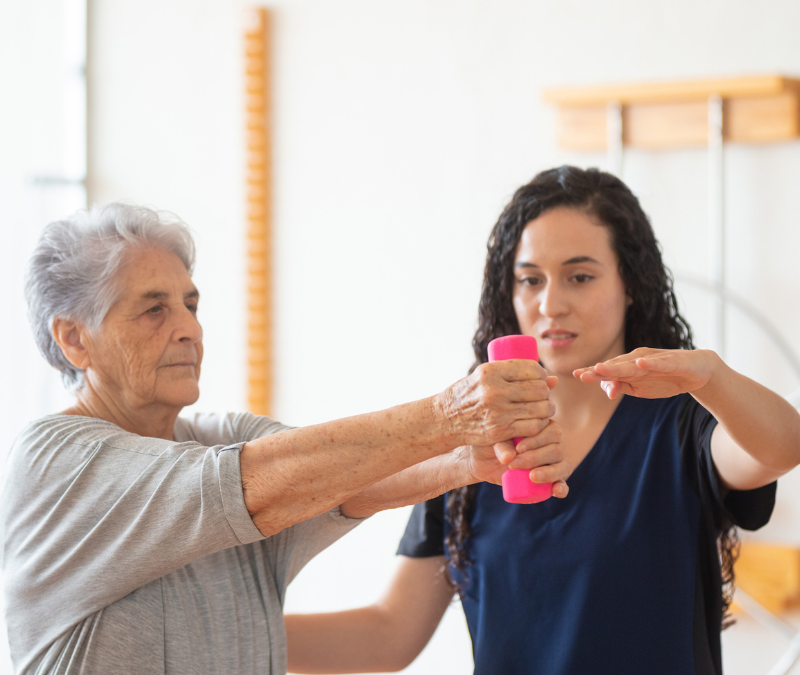Health challenges are all too common, especially in the current world condition with a considerable lack of mobility and flexibility. So, let’s delve into the remarkable world of occupational therapy (OT) and how, it becomes a powerful tool for improving your well-being. We’ll also mention what Kinetic Rehab & Spine has to offer in this much needed service.

Understanding Occupational Therapy
Occupational therapy is a dynamic and holistic approach aimed at enhancing your quality of life by helping you engage in meaningful daily activities. Whether you’re facing physical, mental, or developmental hurdles, occupational therapists are your guides. They work with individuals of all ages, meticulously addressing the factors that might be hindering your ability to lead a satisfying life.
The Benefits of Occupational Therapy
The advantages of occupational therapy, particularly when enhanced by Kinetic Rehab & Spine, are numerous:
- Enhanced Independence: OT, in conjunction with Kinetic Rehab & Spine’s advanced tools, empowers individuals to regain and maintain independence in daily life.
- Improved Quality of Life: By addressing physical, emotional, and environmental factors, occupational therapy enriched by Kinetic Rehab & Spine contributes to an improved overall quality of life.
- Effective Pain Management: Occupational therapists, with the support of Kinetic Rehab & Spine, play a crucial role in pain management through techniques such as ergonomic assessments and adaptive equipment recommendations.
- Support for Caregivers: Occupational therapy, complemented by Kinetic Rehab & Spine’s innovative approach, extends its benefits to caregivers, reducing the physical and emotional strain often associated with caregiving.
How Do Physical Therapy and Occupational Therapy Differ?
Physical therapy (PT) and occupational therapy (OT) are two distinct healthcare professions, each with its own focus and goals. While they often collaborate to support patients’ overall well-being, there are key differences between them:
Focus and Goals:
- Physical Therapy (PT): PT primarily focuses on improving physical function and mobility. Its goal is to address musculoskeletal issues, alleviate pain, and enhance a person’s physical abilities. PT interventions may include exercises, manual therapy, and modalities like heat or ultrasound to help patients recover from injuries or surgeries.
- Occupational Therapy (OT): OT, on the other hand, is centered on improving an individual’s ability to perform daily activities and achieve independence. OT addresses a broader range of functions, including self-care skills (e.g., dressing, grooming), home management, work-related tasks, and leisure activities. OT interventions aim to enhance an individual’s quality of life and overall well-being.
Areas of Expertise:
- Physical Therapist: PTs specialize in assessing and treating musculoskeletal conditions, such as joint pain, muscle weakness, and mobility limitations. They often work with patients recovering from orthopedic surgeries, sports injuries, or neurological conditions that affect movement.
- Occupational Therapist: OTs have expertise in evaluating a person’s ability to perform activities of daily living (ADLs) and instrumental activities of daily living (IADLs). They address a wide range of issues, including cognitive, sensory, and emotional factors that impact a person’s ability to function independently.
Treatment Settings:
- Physical Therapy: PT is commonly provided in settings like outpatient clinics, hospitals, and sports rehabilitation centers. It’s primarily associated with the physical aspect of recovery.
- Occupational Therapy: OT can be found in diverse settings, including hospitals, schools, nursing homes, and mental health facilities. OT considers the holistic needs of the individual and helps them engage in meaningful activities across various life domains.
Who Might Need Occupational Therapy?
Occupational therapy is beneficial for a wide range of individuals facing challenges that impact their daily lives. Here are some examples of people who might benefit from occupational therapy:
- Children with Developmental Delays: Occupational therapy can help children with developmental delays or disabilities develop essential skills like fine motor coordination, sensory processing, and self-care abilities.
- Seniors: Older adults experiencing age-related changes, such as arthritis, balance issues, or cognitive decline, can benefit from OT to maintain their independence and quality of life.
- Patients Recovering from Surgery or Injury: Individuals recuperating from surgeries (e.g., joint replacements) or injuries (e.g., fractures) may require occupational therapy to regain function and perform daily activities safely.
- Individuals with Mental Health Conditions: OT can assist individuals with mental health challenges in managing daily life activities, improving emotional regulation, and building coping strategies.
- Children with Learning Disabilities: OT helps children with learning disabilities improve their organizational skills, handwriting, and sensory processing, enhancing their performance in school.
- Stroke Survivors: Occupational therapy is crucial for stroke survivors aiming to regain independence in self-care, mobility, and home management.
- People with Chronic Conditions: Individuals managing chronic illnesses (e.g., multiple sclerosis, rheumatoid arthritis) can benefit from OT to learn energy conservation techniques and adaptive strategies to accommodate their conditions.
- Workplace Injury or Stress: Occupational therapy assists employees recovering from workplace injuries or dealing with stress-related conditions, facilitating a safe return to work.
- Substance Abuse Recovery: OT is integrated into addiction treatment programs to help individuals rebuild their lives, develop healthy routines, and regain occupational roles and skills.
- Individuals with Neurological Disorders: OT supports individuals with neurological conditions like Parkinson’s disease, ALS, or traumatic brain injuries in managing symptoms and maximizing their functional abilities.
Cutting-Edge Technology
Kinetic Rehab & Spine integrates cutting-edge technology into occupational therapy, including virtual reality, light therapy, and stress-reduction techniques. These advanced tools enhance the therapeutic experience, restoring neurological function, alleviating neuropathy, and optimizing athletic performance.
Enhancing Balance and Coordination
One of Kinetic Rehab & Spine’s key focuses is on improving balance and coordination. By blending traditional occupational therapy with innovative approaches, they assist individuals in preventing falls, ensuring they maintain their independence and remain active.
Empowering Athletes
For sports enthusiasts and fitness aficionados, Kinetic Rehab & Spine offers a game-changing experience. Their personalized approach ensures that athletes of all levels can excel in their chosen disciplines, utilizing technology and therapy to achieve peak performance.
In Conclusion
Occupational therapy is a potent tool for achieving a healthier, more fulfilling life. Its client-centered approach, tailored interventions, and focus on meaningful activities make it invaluable for individuals of all ages facing various challenges. Now, with the support of Kinetic Rehab & Spine’s specialized technology and expertise, the potential for transformation is greater than ever.
By embracing the principles of occupational therapy, enhanced by Kinetic Rehab & Spine, you can embark on a journey toward transformative changes, empowering yourself to live life to the fullest. Embrace this dynamic fusion of traditional therapy and cutting-edge technology and take your first step toward a healthier, more fulfilling life today. Go on and reserve your first session with us! https://kineticrehabspine.com/contact-us/

